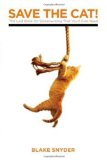If you’re like most writers, setting goals to stay motivated in the face of other responsibilities, then I think it’s important that you count more than just pages.
The actual writing of the script might be the most important phase, but stalling out in the pre-writing phases might mean you never get to writing. Or if you do get to writing, you might become lost and abandon the project.
So, keep track of the pre-writing steps to stay motivated!
1. Write down your concept
If you can turn it into a logline, that’s even better. Now, you can record – “wrote concept/logline.”
2. Figure out what research will develop your idea
If you have an overview of all the research you’ll need, you won’t feel like you’re wasting time. You’ll know when enough is enough.
Research includes:
- Talking with or interviewing people
- Watching related movies or shows
- Reading articles and scripts.
Research should anchor your project’s relevance, accuracy, impact or marketability. Make sure you keep track of what you do. Some people generate notes.
3. Plan your beats
Usually you’ll have a few ideas for moments that attracted you to the idea in the first place. Write them down.
I write mine on 3×5″ index cards and then stick them on a cork board, where I can rearrange them. Then, I keep track of how many I write each day.
For feature films, Blake Snyder suggests forty of these cards in his book, Save the Cat!. I usually try to overshoot this number and then refine. The scenes that don’t make it are opportunities to flesh out my characters.
4. Outline your scenes
I move on to outlining when my board is covered and has some logic to it. Some people go straight into outlining. I find outlining is easy if I really iron things out in the planning phase. And writing is easy if I really iron things out in the outlining phase! Okay, not quite, but easier.
You can measure an outline by page count, but for many people, outlines fluctuate greatly in length. So, it might make more sense to count scenes and make sure you have all your important scenes outlined.
You can count a scene as outlined when it has a purpose to the storyline, conflict, and an emotional change in the characters.
Save the Cat! is a great resource for some of the tools I mention:
